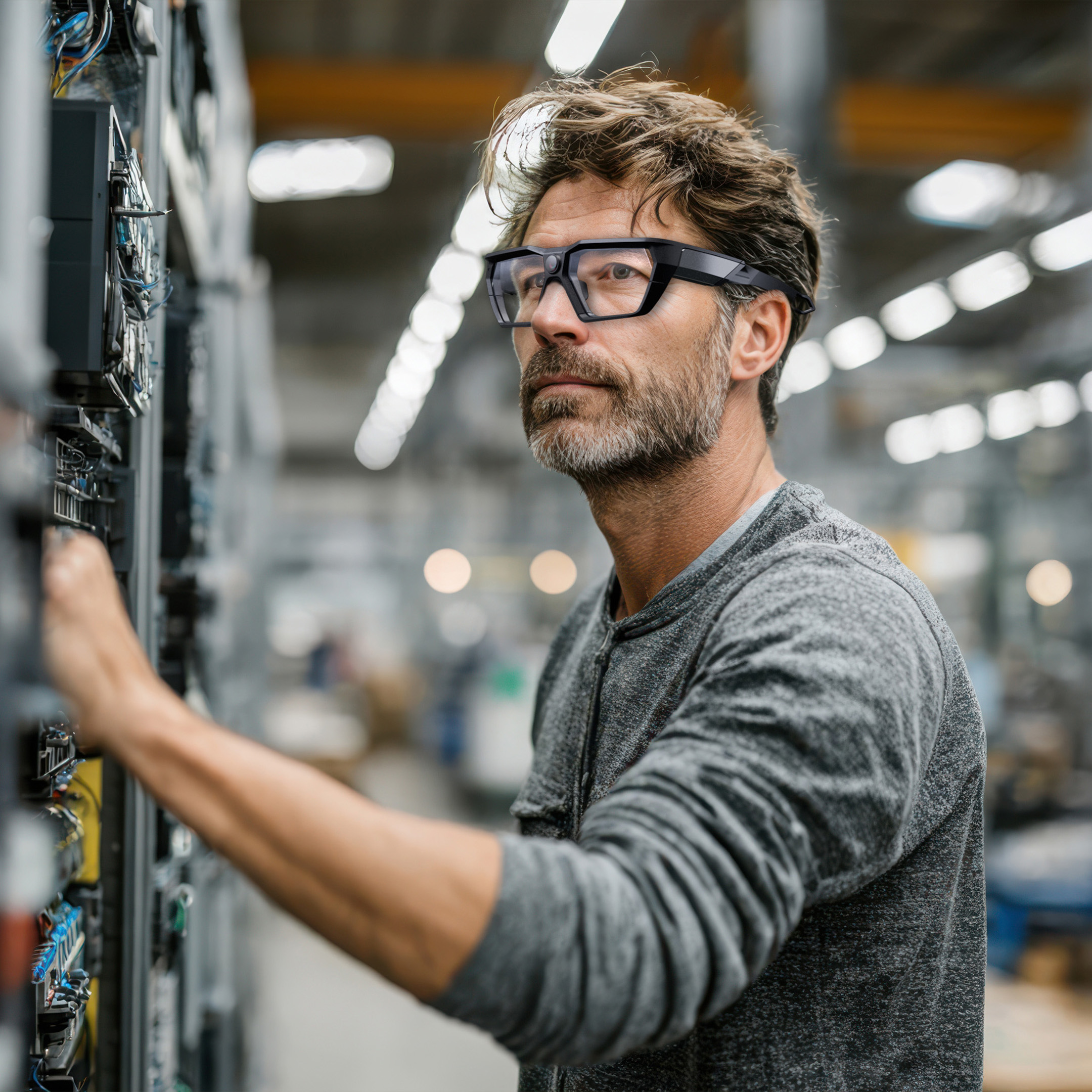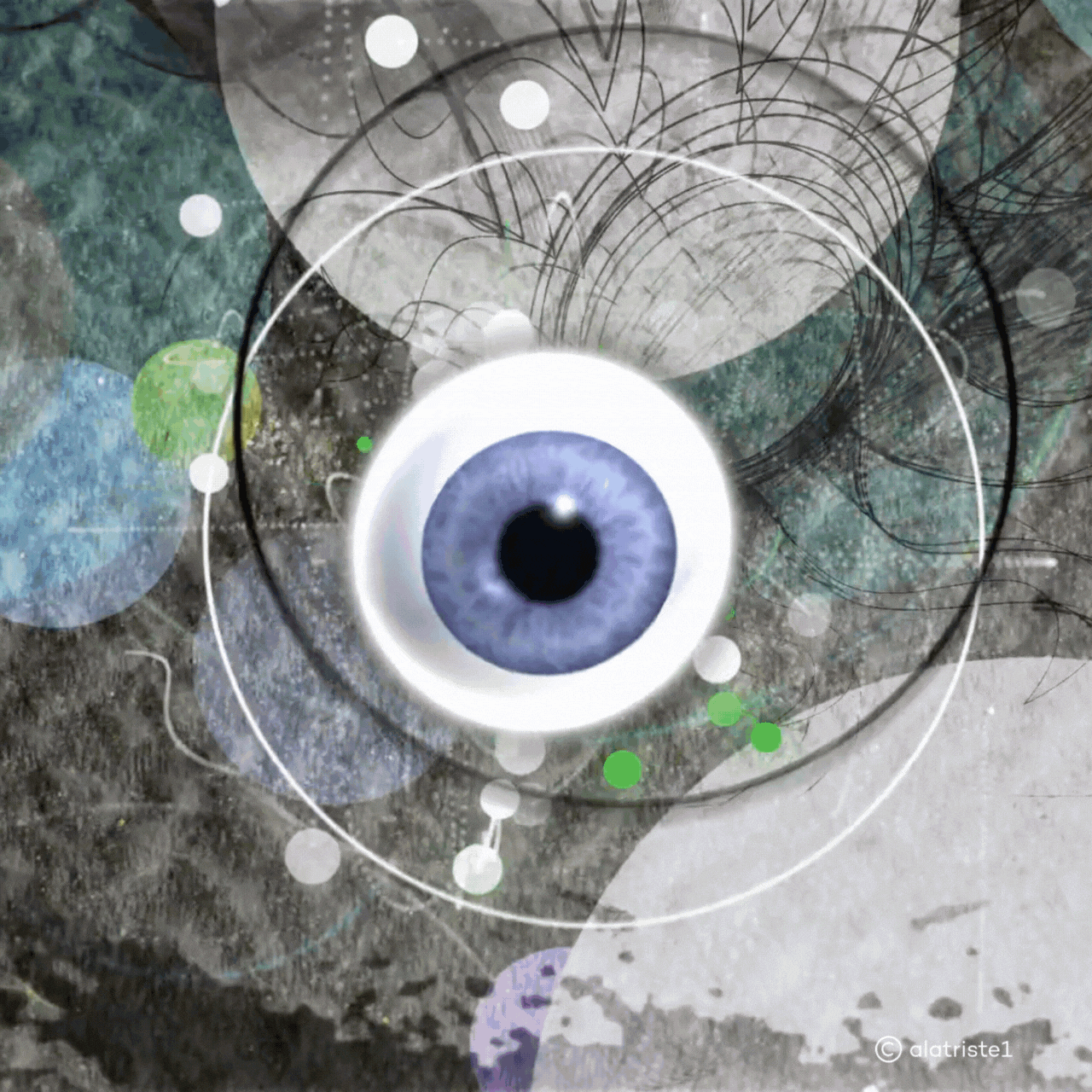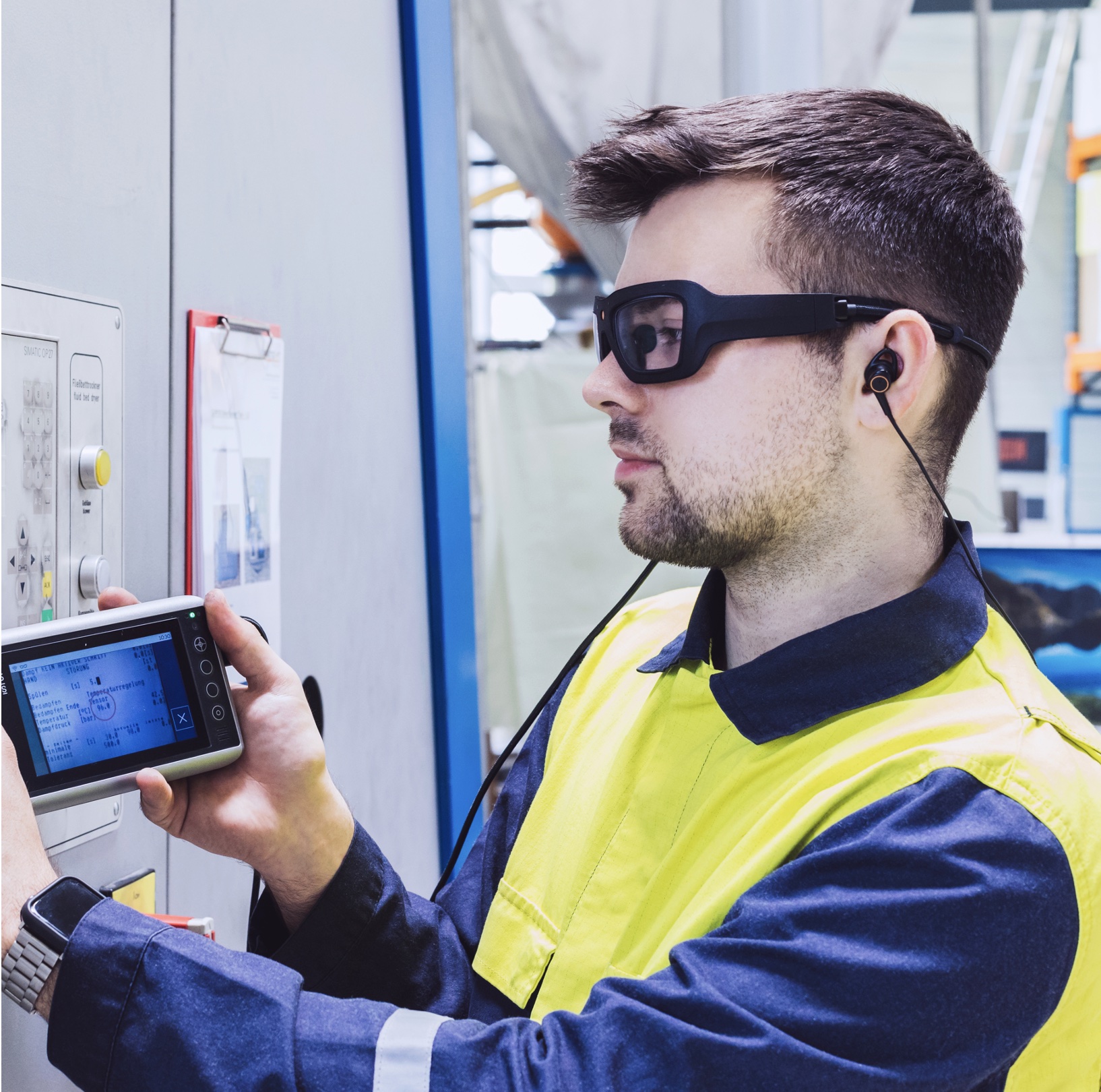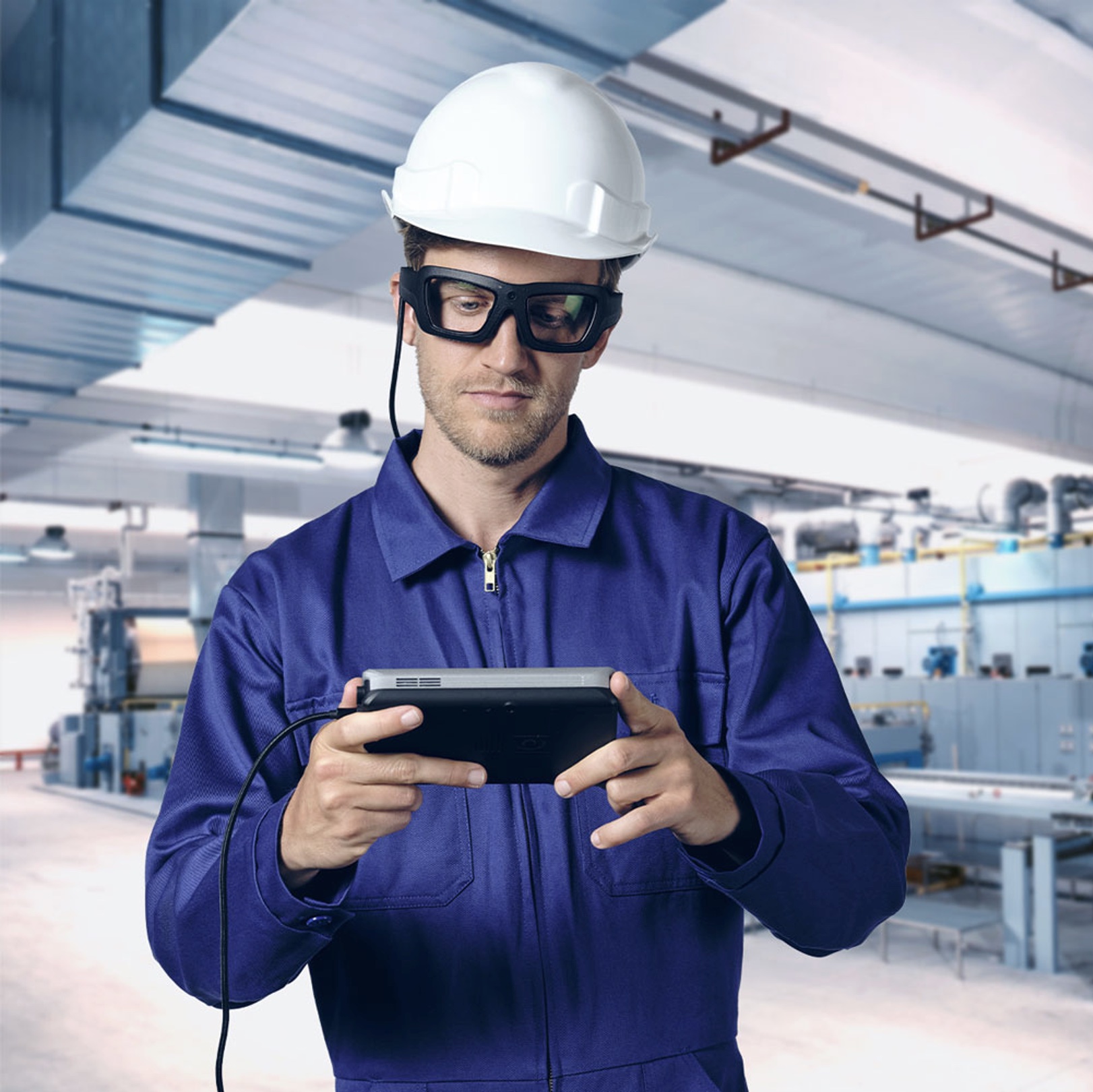EDITORIAL TEAM: WHAT TYPES OF DATA ARE TYPICALLY COLLECTED BY SMART GLASSES?
Renate Stiegler: The type of data collected by smart glasses greatly depends on the application context. Typically, visual data such as images and videos of the immediate environment are captured, which is particularly helpful for maintenance and repair work. Audio data is also important, for communication between users and trainers or connected experts, as well as for voice control. Location data is also often collected for logistical processes and navigation in complex facilities, although this does not apply to our own glasses.
For specialised applications, smart glasses also collect biometric data, such as the user’s visual focus point using eye tracking, in order to train their attention.
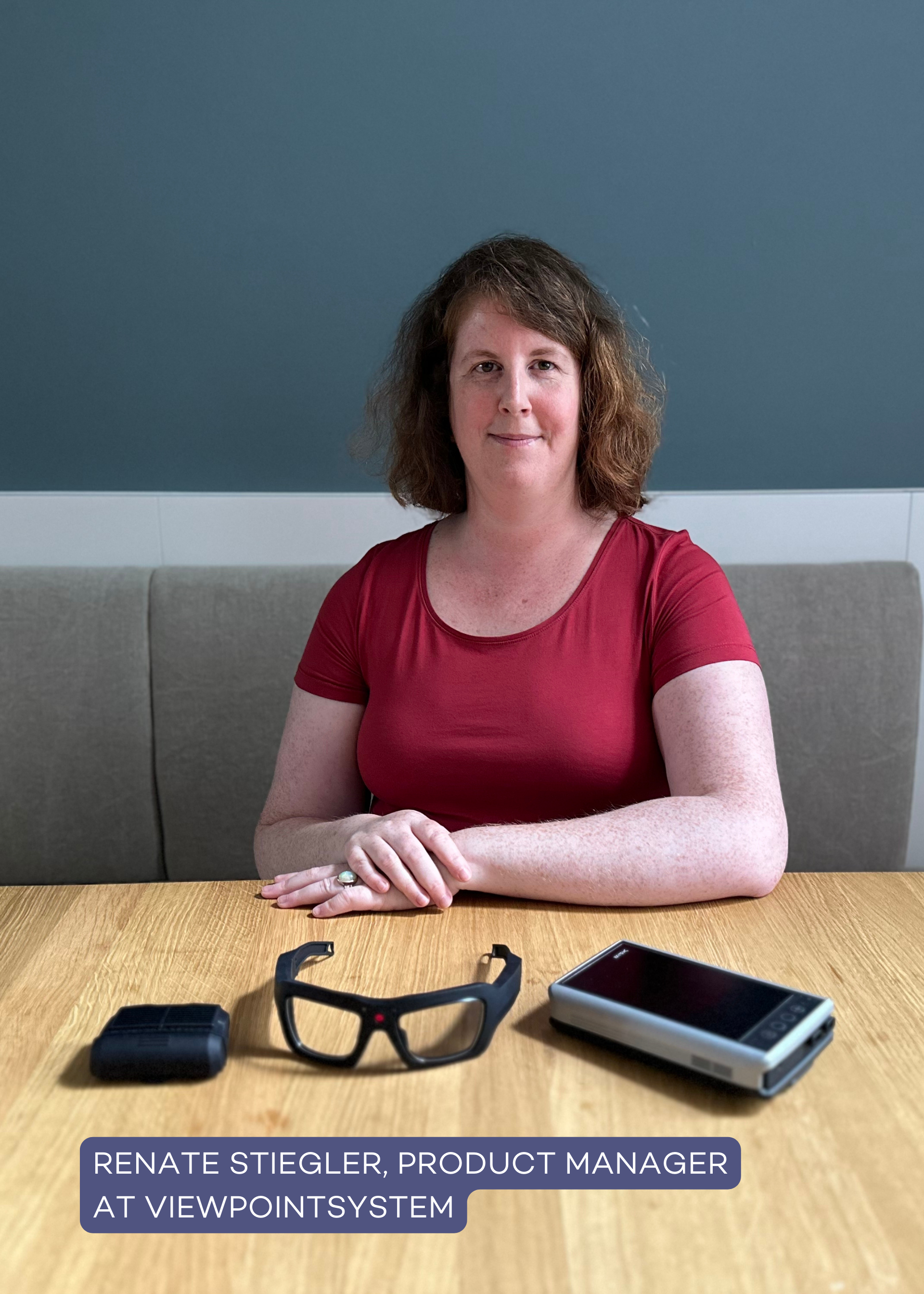
HOW CAN COMPANIES ENSURE THEY MEET DATA PROTECTION REQUIREMENTS, SUCH AS THE EUROPEAN GDPR, WHEN USING SMART GLASSES?
We advise companies to accomodate data protection processes from the very start of the integration procedures. An essential step is creating a privacy policy that defines the principles of data minimization and purpose limitation. This will ensure that only the necessary and clearly defined data is collected.
Additionally, a removal policy should be implemented that covers user data and third-party data, specifying how and when data should be deleted to avoid unnecessary data retention. It is also advisable to use systems that do not require the creation of user profiles, better protecting the anonymity and privacy of users.
WHAT ERGONOMIC FACTORS SHOULD BE CONSIDERED WHEN SELECTING SMART GLASSES FOR EMPLOYEES?
Weight is an important aspect. The unit should be as light as possible so it can be worn for long periods without causing neck discomfort, headaches or pressure points.
Another important factor is the placement of emitting elements such as WiFi or Bluetooth. Many employees have concerns about these being placed directly on the head. Our approach is to place these components in a separate recording unit that can be flexibly attached to the body, for instance a belt clip, depending on the application. This keeps the actual glasses very light, significantly improving both ergonomics and user safety.
WHAT ADDITIONAL POTENTIAL IMPAIRMENTS SHOULD COMPANIES CONSIDER WHEN SELECTING SMART GLASSES?
It is essential to consider potential interactions with other work equipment or the environment. Depending on the model of smart glasses, the field of vision may be restricted, or distractions may occur, for example if the glasses are not sitting comfortably or if digital content is displayed statically in the wearer’s field of vision. This can be particularly critical in a dynamic work environment, like when operating machinery or industrial trucks, and can also lead to an increased risk of tripping or slipping.
HOW CAN COMPANIES DETERMINE SAFE WEARING TIMES FOR SMART GLASSES, TO MINIMISE HEALTH RISKS?
Above all, it is important to protect the cervical spine. Our glasses are lighter than a safety helmet, which is mandatory in many industries, meaning they can be worn for longer periods without any health risks.
Industry-specific regulations and recommendations provide information on the appropriate wearing time for safety equipment. The use of the glasses can be adapted accordingy.
From an ergonomic point of view, our glasses weigh only slightly more than conventional optical glasses. This means that they can be worn all day under normal conditions without any negative physical effects. The period of use can therefore be flexibly managed based on the specific requirements of the workplace and the individual needs of the employees.
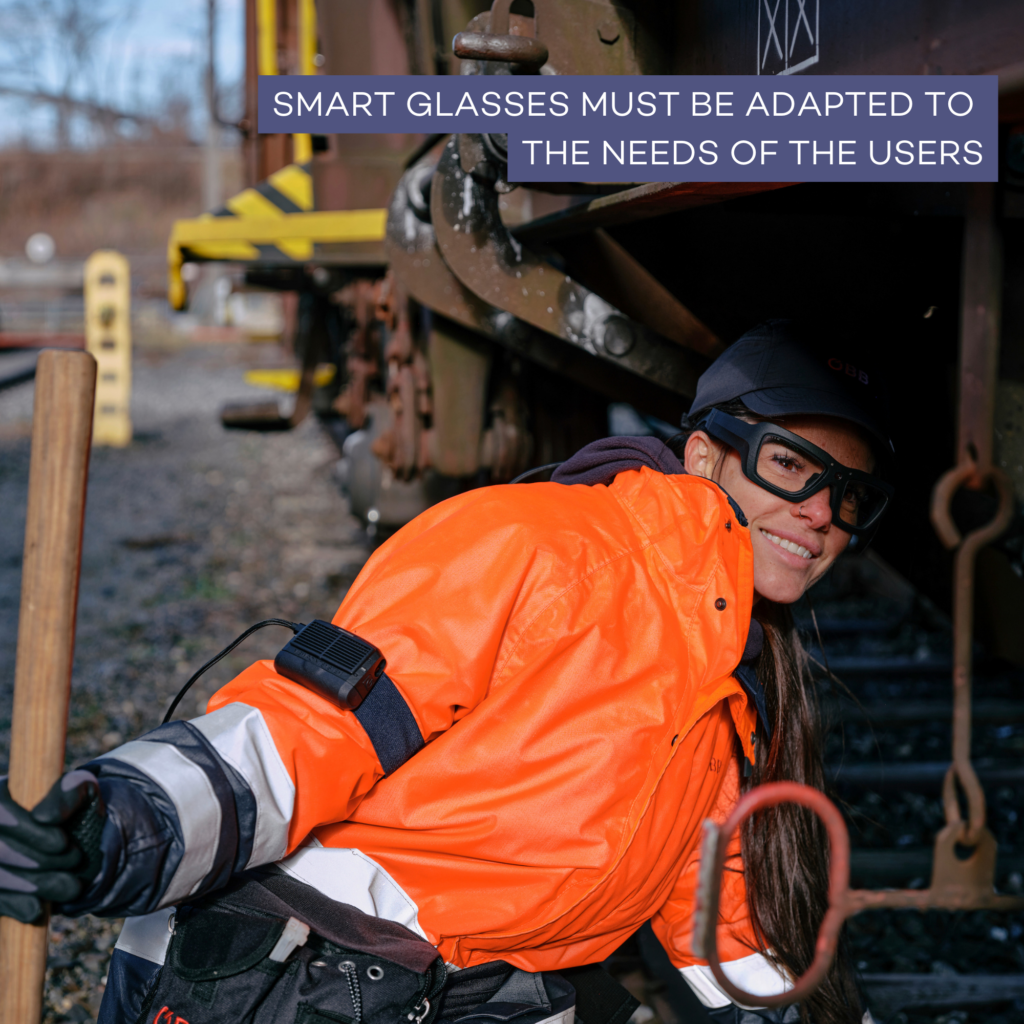
WHAT SECURITY MEASURES CAN PROTECT THE DATA COLLECTED BY SMART GLASSES FROM EXTERNAL ACCESS?
Firstly, data encryption is of outmost importance to ensure that information remains unreadable even if the device is physically accessed. Ideally, data should be stored locally on the device to maximise control over data storage and minimize reliance on external cloud services. If data is stored in the cloud, higher security measures are required as there is a risk of unauthorised access.
If permanent data backup is required, this should take place within the company’s own infrastructure to ensure compliance with data protection standards and minimise the risk of data leaks.
Manual access to the storage units of smart glasses should be strictly regulated and only carried out by trained personnel who are aware of the sensitivity of the data. It is also important to regularly delete data that is no longer required to minimise the amount of stored data and reduce the risk of misuse.
WHAT OTHER TIPS CAN HELP COMPANIES ENSURE A SMOOTH PRACTICAL INTRODUCTION OF SMART GLASSES?
It has proven essential to involve the work council or employee representatives in the planning and implementation process at an early stage. This promotes transparency and strengthens trust and acceptance among employees.
It is also important to integrate all involved employees into the process right from the start. Their opinions and feedback should be actively sought and taken into account in the development and implementation of the technology. Information events and training sessions can eliminate ambiguities and address employee concerns, significantly increasing acceptance.
It may also be advisable to carry out pilot projects or test phases before smart glasses are introduced throughout the company. These pilot phases make it possible to test the technology under real working conditions and make any necessary adjustments.
WHAT FUTURE TRENDS ARE EMERGING FOR THE USE OF SMART GLASSES IN THE WORKPLACE? AND WHAT ROLE DOES DATA PROTECTION PLAY IN THIS?
With the increasing interconnection of all IT systems, there is a growing need to anonymize personal and sensitive data, especially if this data is not directly required for the desired purpose. In this context, advanced technologies for data encryption and security are becoming increasingly important.
Companies and manufacturers are required to consider data protection aspects as early as the development phase of their products, an approach known as ‘privacy by design’. Privacy is therefore not only a legal obligation, but also a critical factor in the adoption and success of smart glasses in an enterprise context. Companies that successfully implement robust privacy strategies not only secure regulatory advantages, but also strengthen the trust of their employees and customers
